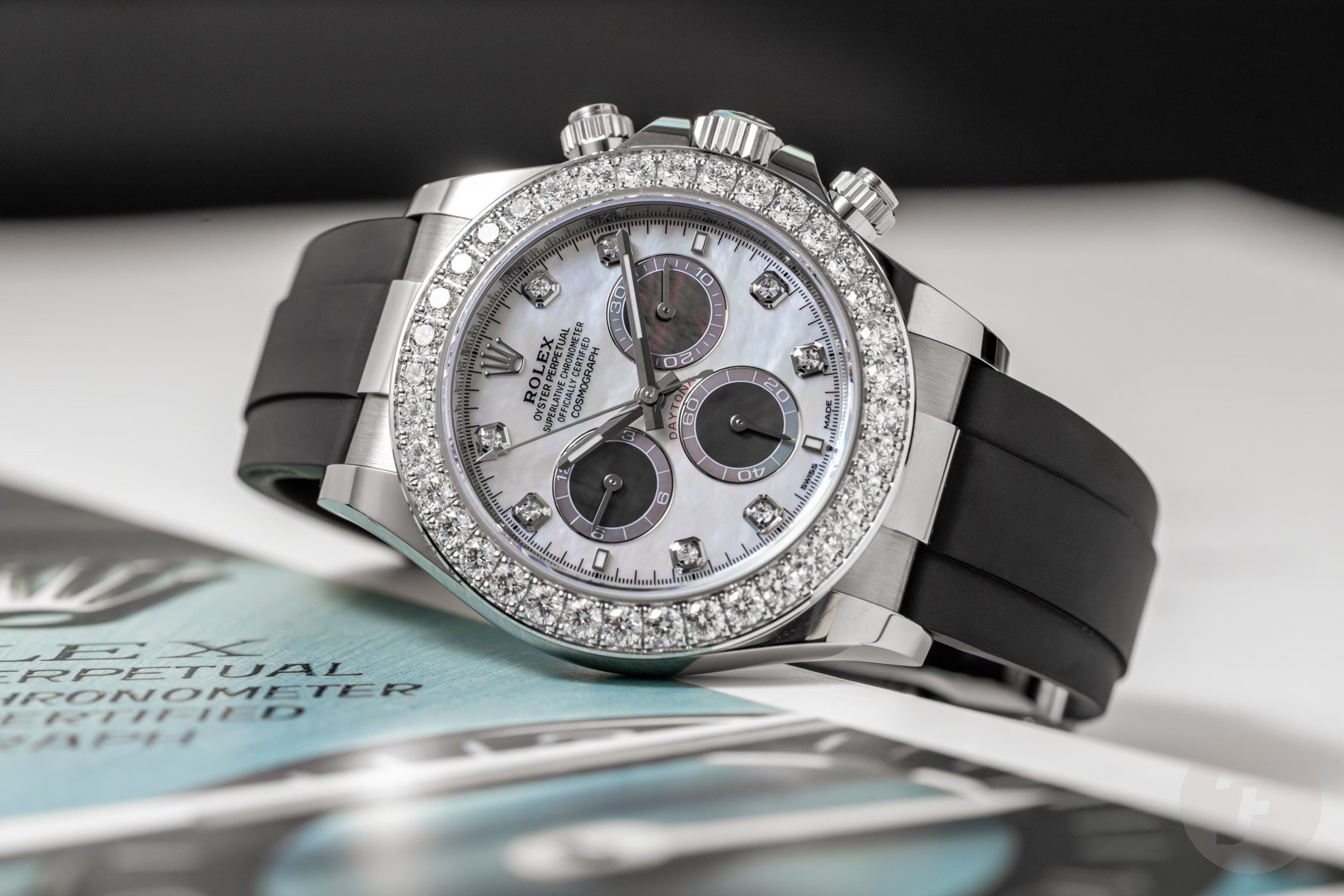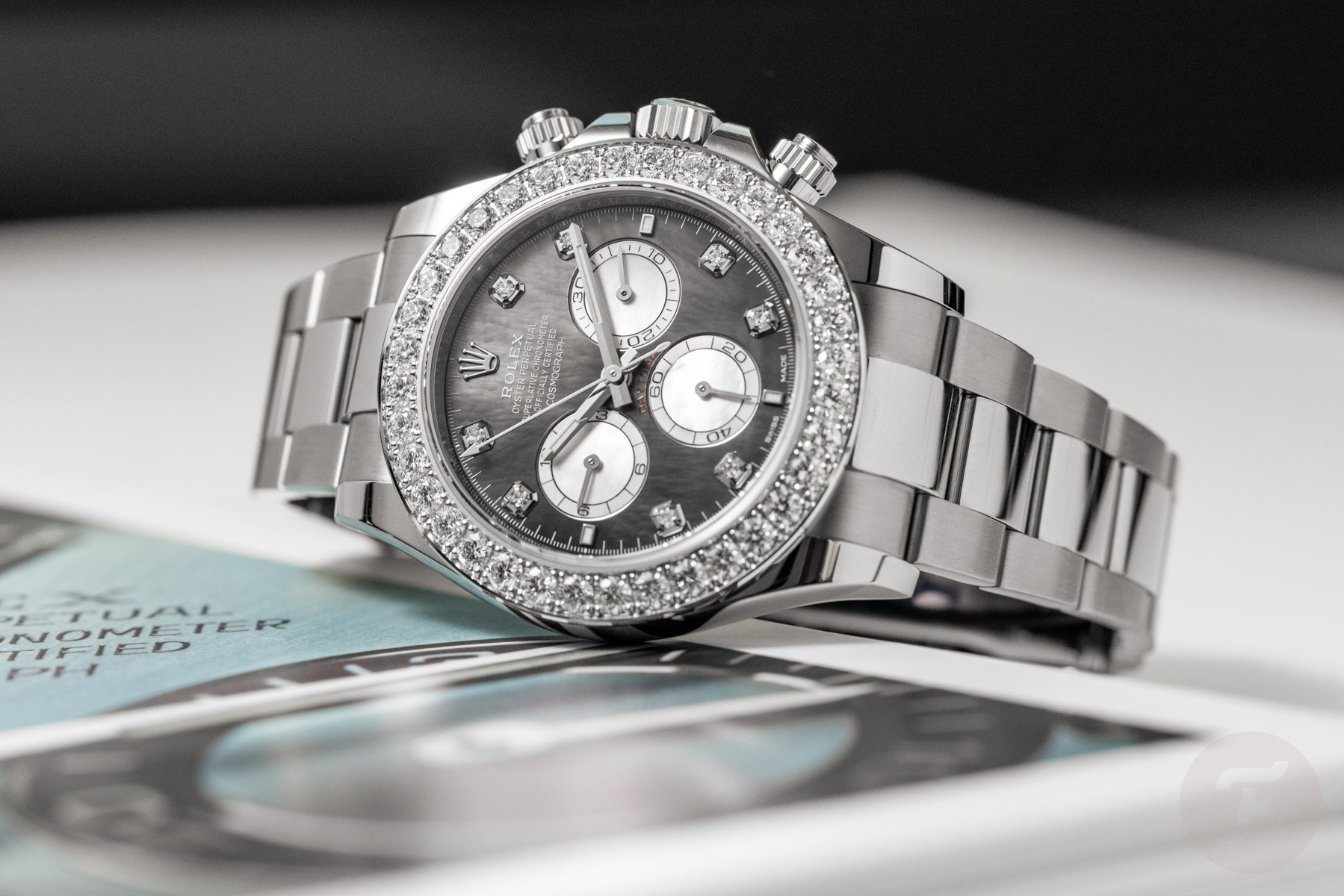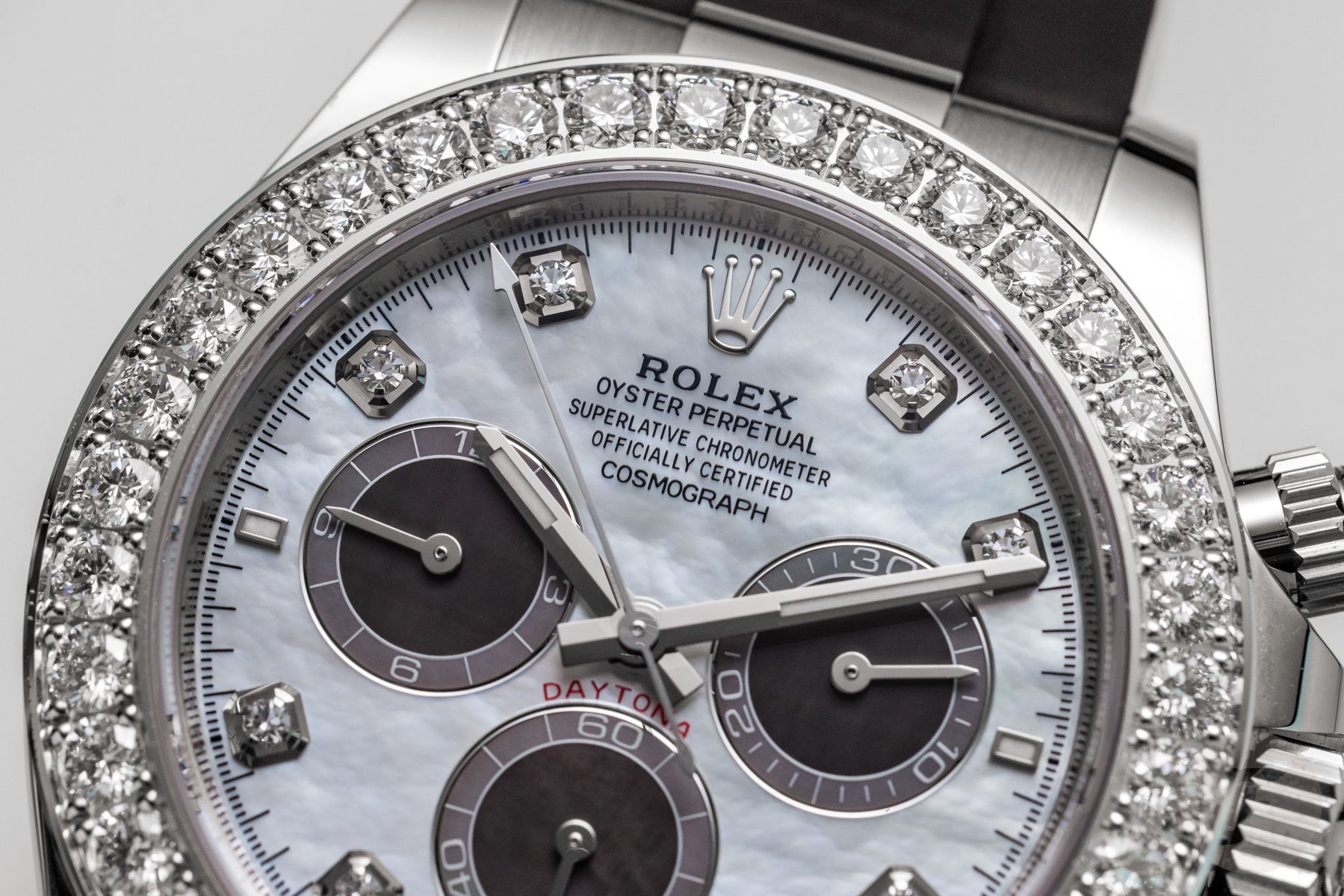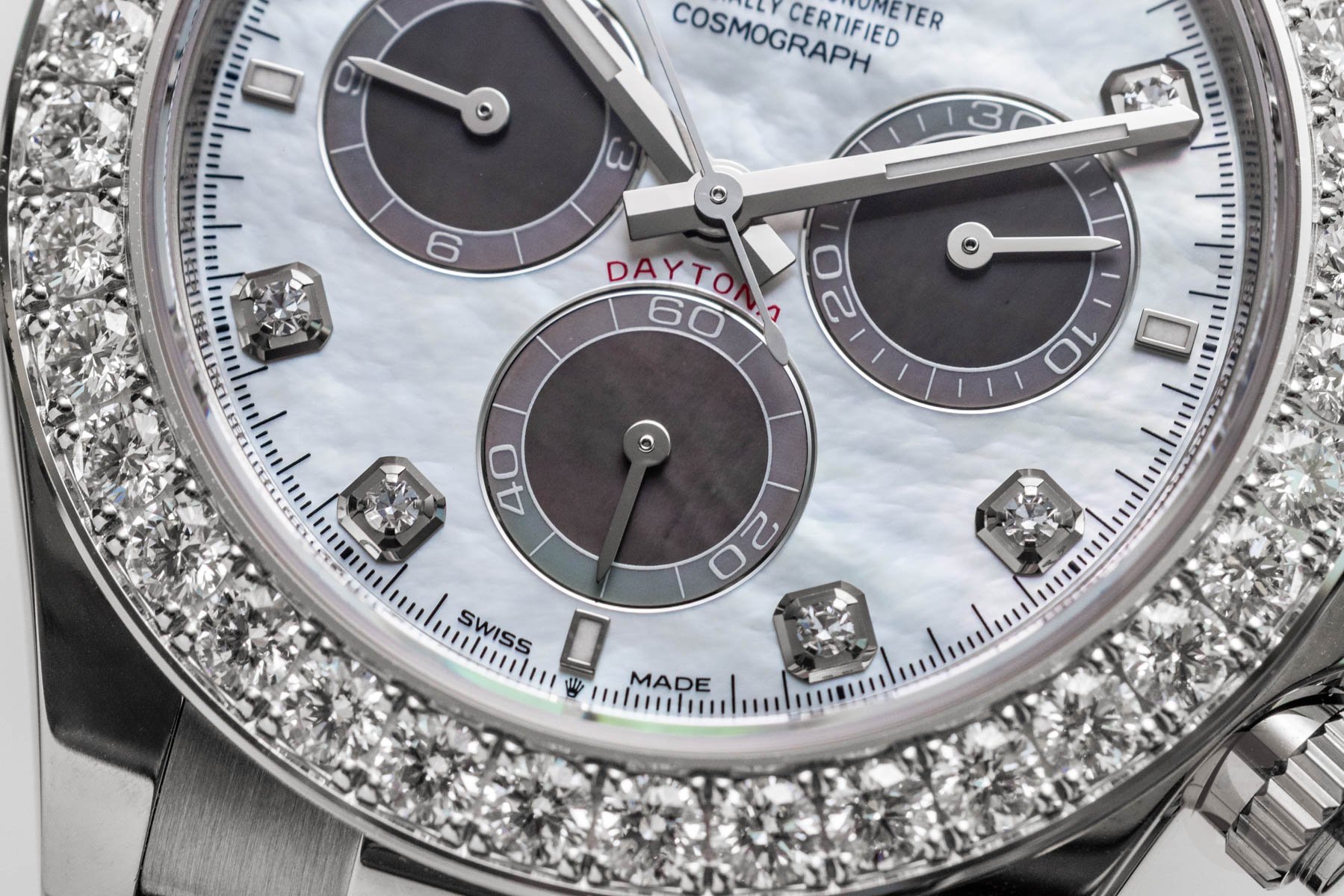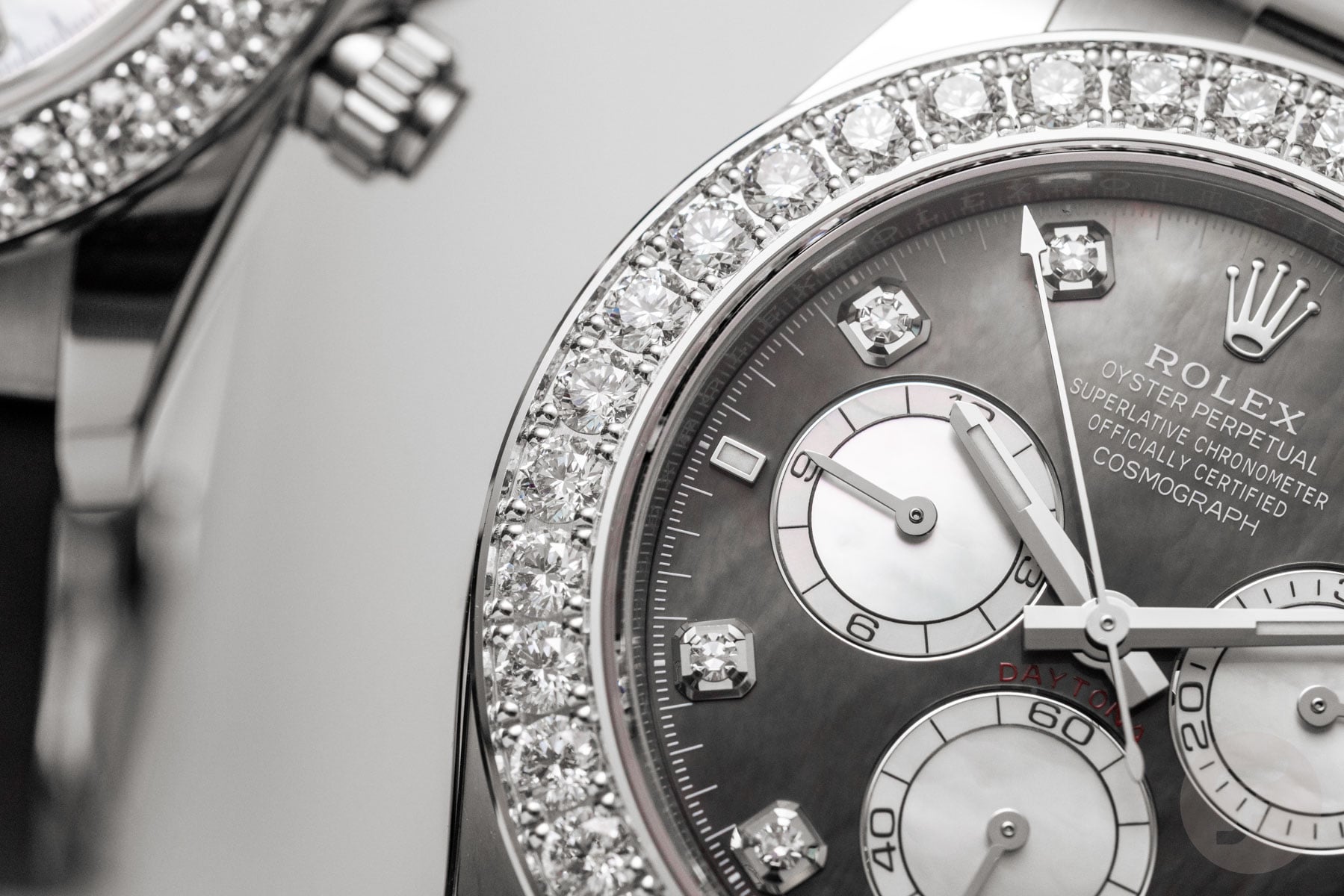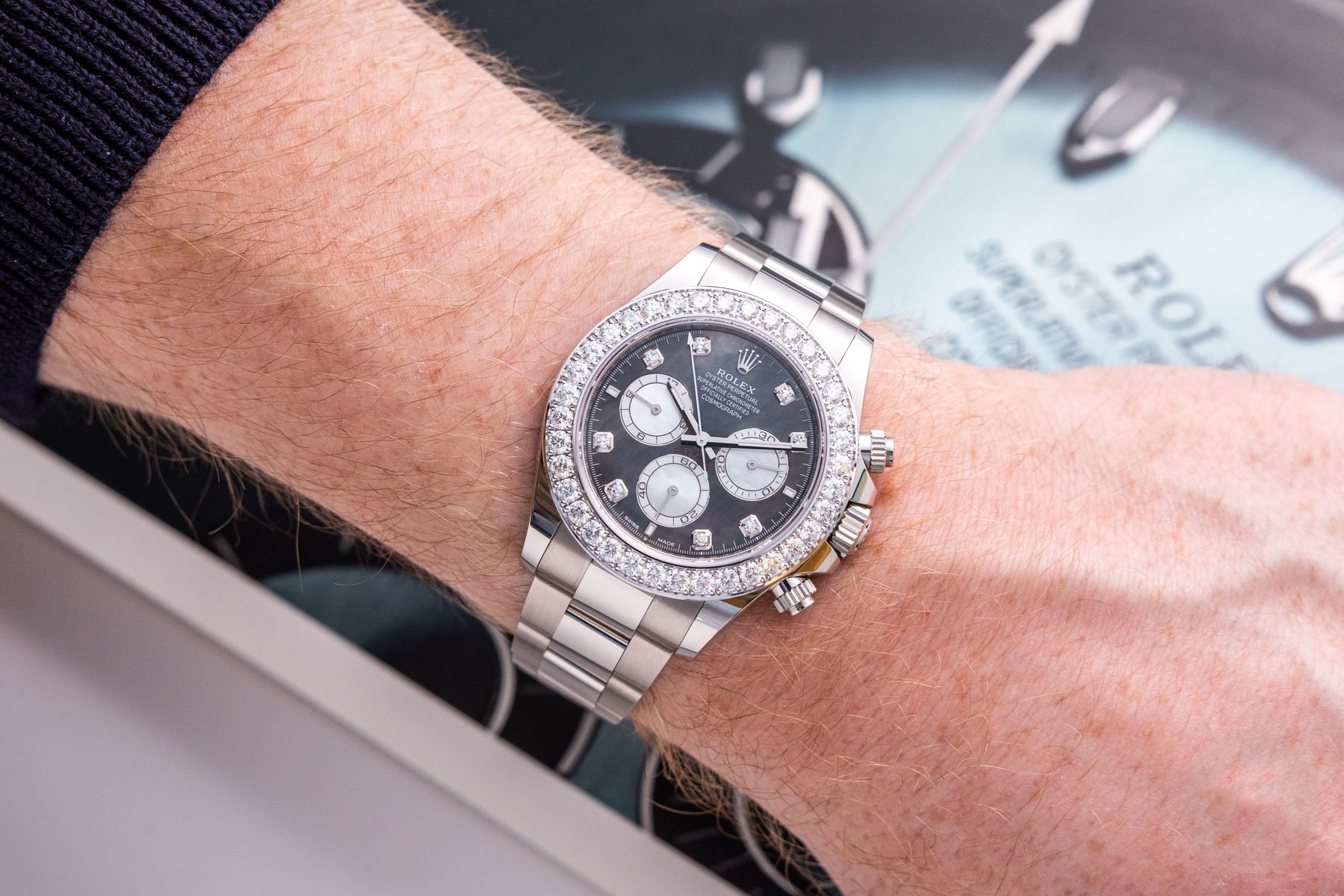It’s An “Icy” Monday In August With Two Diamond-Set Versions Of The Rolex Cosmograph Daytona
This Monday morning, it is all about making crucial “bling” decisions. Not too long ago we had the pleasure of going hands-on with two diamond-set versions of the Rolex Cosmograph Daytona in white gold: the reference 126589RBR with a “Panda” mother-of-pearl dial on an Oysterflex bracelet and the reference 126579RBR with a “Reverse Panda” “MOP” dial on a white gold Oyster bracelet. There’s enough ice on both models to start a heated discussion, but in the end, I guess the bracelet decides if you’re “Team Panda” or “Team Reverse Panda.”
Maybe there will come a time when you feel the need to own a watch with diamonds. And not just any watch; no, you want one of the world’s most famous chronographs with diamonds. But since colored gold might be too much in your face, white gold is your alloy of choice. Rolex offers you two choices. There’s the reference 126589RBR, a 40mm white gold Daytona with a naturally colored mother-of-pearl dial with black sub-dials and a black Oysterflex bracelet (Rolex doesn’t want anybody to call it a strap because of its special steel inserts, but more on that later) that will set you back €66,450. And then there’s the reference 126579RBR with a black MOP dial and a sporty and familiar-looking 3-link Oyster bracelet in the same material as the case, white gold, with a price of €75,700.
Choose between two diamond-set versions of the Rolex Cosmograph Daytona
Let’s not start the discussion if it’s appropriate to present an instrumental chronograph that, since its inception in 1963, has become a legend, with a fragile mother-of-pearl dial with diamond indexes and diamonds on the bezel thus taking the place of the instrumental tachymeter scale. Since Rolex came up with the Daytona, the brand can do with it what it wants. That’s a fact and not up for discussion, anyway. And so there’s a plethora of non-purist Daytona models out there that make some people quiver with disgust but resonate with others who don’t mind a bit of extra visual spectacle like an MOP dial and the radiant shine of diamonds.
New this year are the “iced” references 126589RBR and 126579RBR. Let’s look at the similarities first. Both Daytona models have a 40 × 11.9mm case with a lug-to-lug length of 47mm. Inside the precious metal case that’s water resistant to 100 meters, Rolex put the chronometer-certified, automatic chronograph caliber 4131. This in-house movement is the result of evolution and innovation, and this has led to a simplified architecture that resulted in extra space for a large main spring and, therefore, a modern power reserve of 72 hours. Traditional is the precise vertical clutch mechanism of the chronograph that guarantees long-running operational fun. Other technical features include the Chronergy escapement and the Parachrom hairspring. The Oyster cases of both models also show screw-down pushers and a Triplock winding crown equipped with the brand’s patented water-resistance system.
Tachymeter scale, be gone!
Both watches’ dials may be executed in delicate mother-of-pearl, but the dial layout remains robust. Counters at 3, 6, and 9 o’clock instantly say “Daytona.” The black counters against a white background also say “Paul Newman,” the actor who made the Panda Daytona famous. But when you’re in the market for the ref. 126589RBR with its Panda dial, you’re not trying to mimic the Hollywood icon. Apart from the not-very-sober dial shades, there are just too many diamonds around that interfere with the vibe of the famous actor/style icon/social entrepreneur Paul Newman.
The MOP dial is a luxurious upgrade of a functional dial. So are the eight diamonds that act as hour markers—the other three indexes show a touch of Chromalight, and at 12 o’clock, the Rolex crown serves as an hour marker. It seems that looks trump functionality in these two new spiced-up versions of the Daytona. The instrumental Cerachrom bezel with a tachymeter scale has been replaced by a bezel adorned with 36 brilliant-cut diamonds. But that’s not the end of the world. Please don’t tell me you actually use your functional tachymeter scale. I don’t believe you!
Bracelet vs. bracelet
The dials are opposites — it’s a case of picking your panda — and so are the bracelets. And I suspect the deciding factor between the two white gold Rolex Cosmograph Daytona models is what holds the “icy” chronograph on the wrist. Yes, you can ask the official dealer to change the bracelets. But since we’re dealing with two official references and the Crown doesn’t like fiddling with its watches, let’s assume you have to pick either one of the two and can’t change a thing.
In that case, the adventurous choice is the Oysterflex, and the traditional one is the Oyster bracelet. Rolex wants everyone to call the rubber Oysterflex a bracelet because it has two flexible, curved metal blades inside black elastomer. The bracelet features cushions on its inner sides and an Oysterlock safety clasp to prevent accidental opening. In addition, the bracelet’s length can be adjusted via the Glidelock extension system. When you know all this, you understand why Rolex doesn’t want the Oysterflex to be seen and known as a strap.
My guess is that the Oyster bracelet doesn’t need any explanation. First introduced in the late 1930s, it has become the most famous sporty and robust bracelet of all time. Executed in white gold, it is all that and luxurious, too. So, what’s your bracelet of choice? I’m all for the Oysterflex, because I like the contrast with the white gold case and the whitish, natural shimmer of the MOP dial. I also think that if you’re going “overboard” with a Daytona, you best go all the way.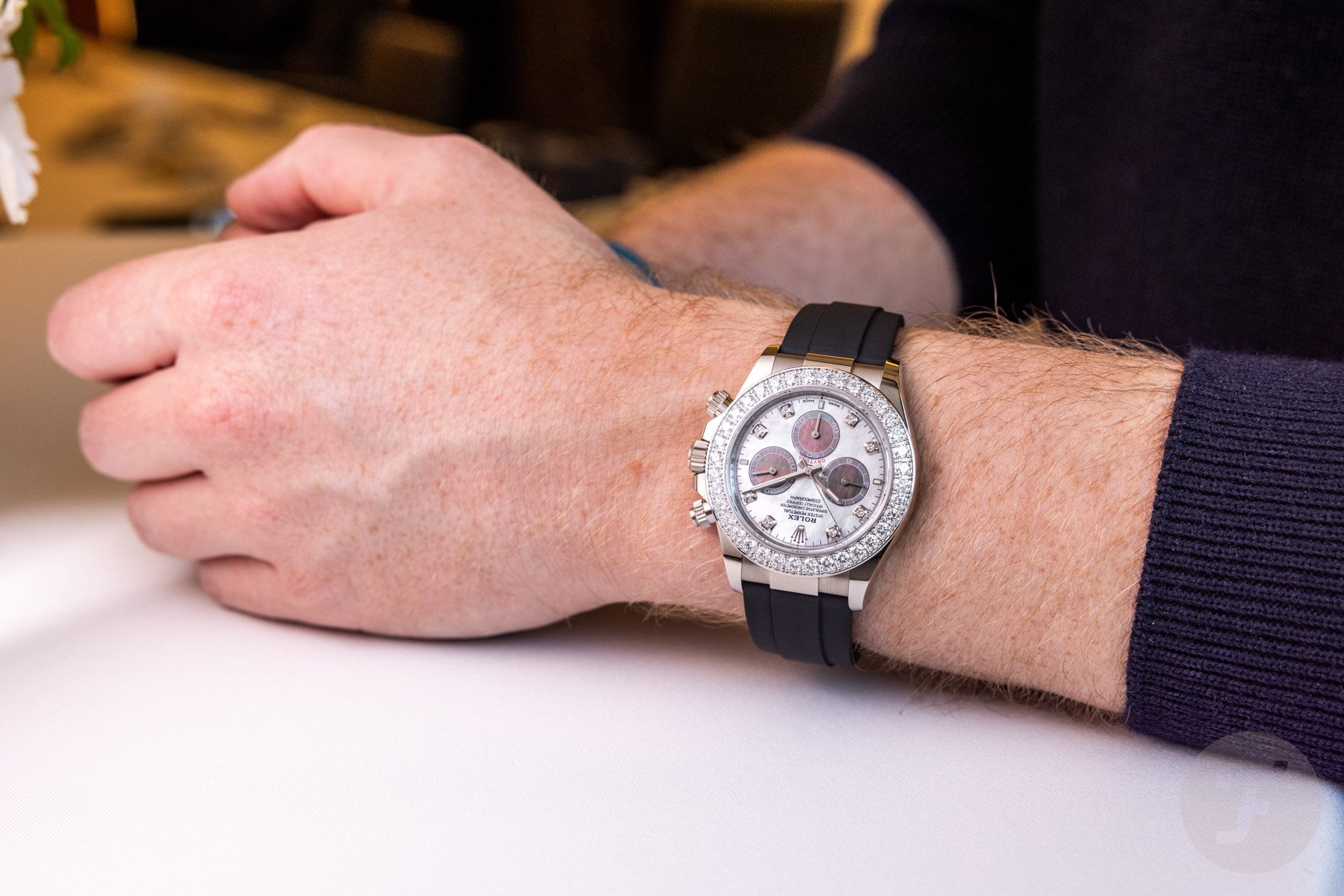
But I would love to know which of these two diamond-enriched Daytona models is your favorite in the comments below. And diamonds or not, remember to stay frosty on this mid-August monday!

